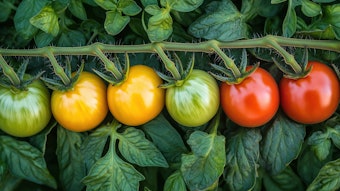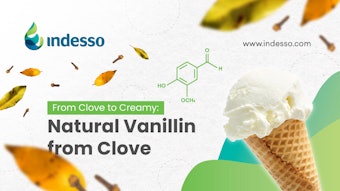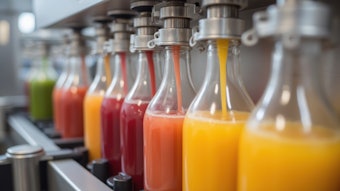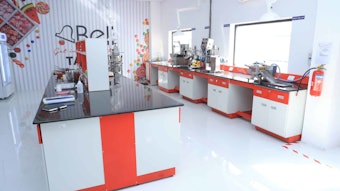
Increasingly, consumers are looking for food and beverages that not only taste great, but also offer some sort of functional benefit, like an energy boost, workout recovery, improved digestion, or better brain health. In fact, the “Better for You” market is expanding exponentially — thanks to a younger generation of consumers who continue to push the envelope and demand more out of everything they eat and drink. It’s predicted that this segment of the market will grow by nearly $200 billion by 2030a.
 Fabio Catone, Senior Strategy & Portfolio Manager — Extracts & Beverage
Fabio Catone, Senior Strategy & Portfolio Manager — Extracts & Beverage
However, when trying to bring products like this to market successfully, food and beverage developers and manufacturers are quickly learning that it’s not always easy to make “Better for You” products taste good. Generally speaking, the ingredients that are used to create those in-demand functional benefits intrinsically bring components that have notes of bitterness, astringency and other unpleasant flavors.
Fortunately, natural extracts coupled with flavor maskers can be the solution. The right flavors and extracts partner can help you formulate something that offers a functional benefit and tastes great — it doesn’t have to be one or the other.
What does “Better for You” entail, exactly?
When people say they want a great-tasting beverage that’s good for them, they’re talking about obtaining benefits; anything that boosts brain health or attention focus is very popular. Other strong performers include products that enhance gut health and digestion. Add-ins for boosted energy and improved mood are also common, as are products formulated to promote workout recovery.
While the food industry overall is reacting to this demand by rolling out new and reformulated products, beverages are showing especially strong participation in the better-for-you trend.
 Some sodas, coffees, and teas have added vitamins, and the manufacturers refer to the products as “fortified.”Adobe Stock
Some sodas, coffees, and teas have added vitamins, and the manufacturers refer to the products as “fortified.”Adobe Stock
An easily recognizable example is probiotic sodas. Some sodas, coffees, and teas have added vitamins, and the manufacturers refer to the products as “fortified.” Probiotics make any beverage more functional, and consumers associate probiotics with gut health. Other examples include:
- Beer and other alcohol with caffeine for energy, or probiotics in products like fermented hard kombucha.
- Sports drinks, long established in this area, with additional benefits such as enhanced hydration, extra protein or an energy boost.
For success, producers should formulate these functional benefits in a way that can:
- Add the actual function in some way
- Add association/perception of these functions
- Or improve the taste of an ingredient that has added that function
How Extracts Contribute
The best way to achieve the “Better for You” goal is by utilizing natural, plant-based extracts that can enhance the taste and contribute to the concept of holistic benefit; some extracts might even reinforce the health benefits associated with the product.
Some examples of how extracts improve the overall product viability include:
1. Clean Label: One in four buyers say they look to clean labels as a primary route to health. Extracts are easily identified ingredients and lend themselves to photo treatments on packaging.
2. Positive Association: There is a subconscious expectation associated with certain ingredients. For example, ginger provides the perception of gut health and improved digestion. Lemon extract is seen as the purest form of the ingredient.
3. Natural Taste: Thanks to their true-to-nature flavor contribution, extracts can play a big role in enhancing the flavor of functional beverages by bringing profiles that can go along well with the off notes caused by functional ingredients. Plus, extracts can provide a more natural taste and mouthfeel than a synthetic or artificial version.
Using extracts also can have logistical benefits. Depending on the extract’s form — liquid, powder, CO2 product — it could offer the very real benefit of extended stability and longer shelf life.
 Sports drinks, long established in this area, with additional benefits such as enhanced hydration, extra protein or an energy boost.Adobe Stock
Sports drinks, long established in this area, with additional benefits such as enhanced hydration, extra protein or an energy boost.Adobe Stock
Bringing It All Together
Moving from ideation to production and achieving success in the market means attaining a series of milestones. Manufacturers should work with a partner who can help in these key areas:
Formulation: It sounds basic, but make sure your product tastes good. When many typical better-for-you ingredients are added, they can have a negative effect on taste. Examples are pure caffeine and pea proteins (think protein powders). Formulate around the functional benefit with flavor maskers or enhancers to create a product that is appealing in both benefit and taste.
Multiple Solutions: Work with a partner who can offer a broad portfolio of extracts. For example, orange extracts are often associated with an immunity boost, while ginger root extract is associated with gut health and better digestion.
Clean Label: Consumers who care about a functional benefitb also often care about products having the cleanest label possible.
Perception: Consumers often associate certain flavors with specific benefits, even if the actual ingredient is not present. So, a citrus flavor gives the perception of immunity boost. The ginger flavor is perceived as good for digestion. The chocolate flavor feels indulgent. Mint feels fresh and energetic. Manufacturers can tap into existing perceptions when considering formulations if they are working with a partner who can offer the widest possible palette of extracts. An example? A caffeinated water product could be improved with a lemon flavor to improve taste while also adding a fresh, energetic, immunity-boosting impression to a product that now feels a little more special.
bhttps://www.innovamarketinsights.com/trends/clean-label-trends/
The Right Partner is Key
All the above strategies are only possible if the extract provider can meet as many demands as possible. That means being more than an order taker. A vendor should be a true partner, working to understand the client’s goals and help develop a solution or multiple solutions to choose from; they should be part of the process — from conception to formulation ideas to incorporating trends to completing the functional task. Customers should be able to lean on their extract-solutions partner to help bring an idea to life.
 Work with a team capable of exploring techniques to get the desired result, whether that’s functional benefit, consumer perception, optimal taste, or even other sensory elements like mouthfeel or aftertaste—and all with a clean label.Adobe Stock
Work with a team capable of exploring techniques to get the desired result, whether that’s functional benefit, consumer perception, optimal taste, or even other sensory elements like mouthfeel or aftertaste—and all with a clean label.Adobe Stock
Look for a supplier with the breadth to provide several ways to accomplish product goals. Work with a team capable of exploring techniques to get the desired result, whether that’s functional benefit, consumer perception, optimal taste, or even other sensory elements like mouthfeel or aftertaste—and all with a clean label.
Healthy Ingredients Now, Healthy Market Share Tomorrow
Consumer demand for great taste coupled with maximal benefits isn’t going anywhere. It’s important to be looking ahead and working with partners who share that vision. Consider the possibility of setting trends and collaborating on new twists and products for upcoming seasons well ahead of time.
The “Better for You” market is expanding exponentially. Functional benefits in beverages are clearly the future, as demand continues with Millennials to Gen Z. It’s not easy to make these products taste good, and consumers will no longer surrender taste to achieve a benefit. To succeed, partner with an extracts supplier who already has the proven tools and technical capabilities to formulate something that offers a functional benefit and tastes great. Get it all lined up and see how extracts can be a game changer in achieving all your product goals.










